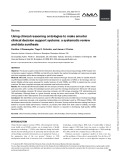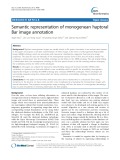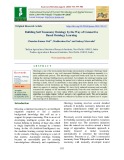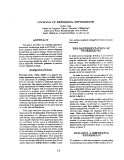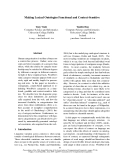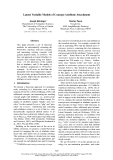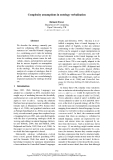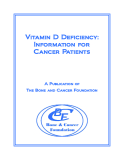
Ontology properties
-
The study sought to describe the literature describing clinical reasoning ontology (CRO)–based clinical decision support systems (CDSSs) and identify and classify the medical knowledge and reasoning concepts and their properties within these ontologies to guide future research.
 16p
16p  vighostrider
vighostrider
 25-05-2023
25-05-2023
 2
2
 2
2
 Download
Download
-
The CBL-interacting protein kinase (CIPK) gene family plays important roles in plant growth, development, and responses to abiotic stresses. To date, the CIPKs have been extensively identified and characterized in various plants. However, there have been few studies on CIPKs in Dimocarpus longan Lour (D. longan). In this study we identified eight putative CIPKs in D. longan (DlCIPKs) according to RNA-seq data.
 13p
13p  tudichquannguyet
tudichquannguyet
 29-11-2021
29-11-2021
 5
5
 1
1
 Download
Download
-
Digitised monogenean images are usually stored in file system directories in an unstructured manner. In this paper we propose a semantic representation of these images in the form of a Monogenean Haptoral Bar Image (MHBI) ontology, which are annotated with taxonomic classification, diagnostic hard part and image properties.
 11p
11p  viwyoming2711
viwyoming2711
 16-12-2020
16-12-2020
 15
15
 1
1
 Download
Download
-
n this research work we have inducted the taxonomy from USDA soil taxonomy, as well as extracted the property. More importantly we have done these tasks which are based on regular expression and with the help of connectives. Connective based taxonomy and property extraction helps us not to use huge corpus behind the text processing. In future the framework can be used for other domains in taxonomic text. It may also be extended for the other aspects of ontology learning like identification of axioms and constraints.
 11p
11p  trinhthamhodang1213
trinhthamhodang1213
 30-05-2020
30-05-2020
 23
23
 0
0
 Download
Download
-
Bài báo này nghiên cứu và đề xuất một hướng tiếp cận trong việc chuyển đổi dữ liệu từ dạng cơ sở dữ liệu quan hệ (RDB) sang Ontology được biểu diễn bằng các ngôn ngữ RDF và OWL. Quá trình chuyển đổi bao gồm 2 bước chính: (i) Ánh xạ lược đồ (tạo ra các lớp từ các bảng, tạo ra các thuộc tính đối tượng (object property) từ các khóa ngoại và tạo ra thuộc tính kiểu dữ liệu (datatype property) từ các thuộc tính không tham gia vào khóa ngoại), (ii) Ánh xạ dữ liệu (tạo ra các thể hiện).
 10p
10p  thiendiadaodien_9
thiendiadaodien_9
 04-03-2019
04-03-2019
 132
132
 2
2
 Download
Download
-
This paper describes the referring expression generation mechanisms used in EPICURE, a computer program which produces natural language descriptions of cookery recipes. Major features of the system include: an underlying ontology which permits the representation of non-singular entities; a notion of diacriminatory power, to determine what properties should be used in a description; and a PATR-like unification grammar to produce surface linguistic strings.
 8p
8p  bungio_1
bungio_1
 03-05-2013
03-05-2013
 26
26
 1
1
 Download
Download
-
Human categorization is neither a binary nor a context-free process. Rather, some concepts are better examples of a category than others, while the criteria for category membership may be satisfied to different degrees by different concepts in different contexts. In light of these empirical facts, WordNet’s static category structure appears both excessively rigid and unduly fragile for processing real texts. In this paper we describe a syntagmatic, corpus-based approach to redefining WordNet’s categories in a functional, gradable and context-sensitive fashion.
 8p
8p  hongvang_1
hongvang_1
 16-04-2013
16-04-2013
 27
27
 1
1
 Download
Download
-
This paper presents a set of Bayesian methods for automatically extending the W ORD N ET ontology with new concepts and annotating existing concepts with generic property fields, or attributes. We base our approach on Latent Dirichlet Allocation and evaluate along two dimensions: (1) the precision of the ranked lists of attributes, and (2) the quality of the attribute assignments to W ORD N ET concepts. In all cases we find that the principled LDA-based approaches outperform previously proposed heuristic methods, greatly improving the specificity of attributes at each concept. ...
 9p
9p  hongphan_1
hongphan_1
 14-04-2013
14-04-2013
 35
35
 1
1
 Download
Download
-
We describe the strategy currently pursued for verbalising OWL ontologies by sentences in Controlled Natural Language (i.e., combining generic rules for realising logical patterns with ontology-specific lexicons for realising atomic terms for individuals, classes, and properties) and argue that its success depends on assumptions about the complexity of terms and axioms in the ontology.
 5p
5p  hongdo_1
hongdo_1
 12-04-2013
12-04-2013
 46
46
 3
3
 Download
Download
-
Discovering the distinction between Roles (local restrictions on properties), and Properties (annotations to a specific class) was another important step. At this point in the development, we were forced to make a choice in which species of OWL to use. Developers attached properties that are not inherited to concepts. If the translator directly attached Properties to classes, the ontology would be in OWL Full. For computational benefits, we decided to work in OWL Lite, and thus owl:AnnotationProperties were used. For other conversions, these...
 15p
15p  taisaokhongthedung
taisaokhongthedung
 09-01-2013
09-01-2013
 68
68
 2
2
 Download
Download
-
In addition to explicitly named Properties, “code” and “id” attributes are special cases. Every entity in the Thésaurus – Concepts, Kinds, Properties, and Roles – has an associated “code” and “id.” These are used as unique identifiers in the Apelon development software, and, as such, are not defined explicitly as Roles or Properties. This required a hard-coded definition of both entities. They were defined as owl:AnnotationProperties, just like other Properties in the Thésaurus, and this allowed them to be attached to all of the definitions in the ontology.
 8p
8p  taisaokhongthedung
taisaokhongthedung
 09-01-2013
09-01-2013
 56
56
 1
1
 Download
Download
-
Since Kant, philosophy has been obsessed with epistemological questions pertaining to the relationship between mind and world and human access to objects. In The Democracy of Objects Bryant proposes that we break with this tradition and once again initiate the project of ontology as first philosophy. Drawing on the object-oriented ontology of Graham Harman, as well as the thought Roy Bhaskar, Gilles Deleuze, Niklas Luhman, Aristotle, Jacques Lacan, Bruno Latour and the developmental systems theorists, Bryant develops a realist ontology that he calls “onticology”.
 318p
318p  konbetocroi
konbetocroi
 02-01-2013
02-01-2013
 55
55
 7
7
 Download
Download
-
Part V (— sections 1.33 — 1.40) addresses the properties by which these latter semantic catego-ries (which we call 'situation-templates1) can be classified into different types. This section is concerned with 'ontological aspect1 (perhaps better known as 'lexical aspect1)
 7p
7p  kathy214
kathy214
 21-09-2010
21-09-2010
 45
45
 2
2
 Download
Download
-
Part V (— sections 1.33 — 1.40) addresses the properties by which these latter semantic catego-ries (which we call 'situation-templates1) can be classified into different types. This section is concerned with 'ontological aspect1 (perhaps better known as 'lexical aspect1), which involves such oppositions as 'static1 versus 'dynamic', 'agentive1 versus 'nonagentive1, 'telic1 versus 'atelic1, 'homogeneous1 versus 'heterogeneous1, etc.
 7p
7p  kathy214
kathy214
 21-09-2010
21-09-2010
 48
48
 2
2
 Download
Download
CHỦ ĐỀ BẠN MUỐN TÌM








